
Please note: As an Amazon Associate I earn from qualifying purchases. I also work with other affiliate partners and may be compensated from the links below. Details here.
You found out you need to replace your graphics card, or you want to upgrade an existing computer for a little more graphics power and you find you’re stuck with a stock power supply and don’t have expansion power without replacing the power supply, too.
What you need to do is have a look at this list of the 8 best low-power graphics cards without external power of 2024 that will run on power supplied through the motherboard and choose the best one for your needs.
8 Best Graphics Cards Without External Power in 2024 Round-Up
The table below will give you a quick look at our selections for the best low-power graphics cards without external power currently available on the market. To read a full review, simply click on ‘review>>’ in the respective row.
Product | Image | Rating | |
1. MSI GeForce GTX 1650 4GT LP OC | 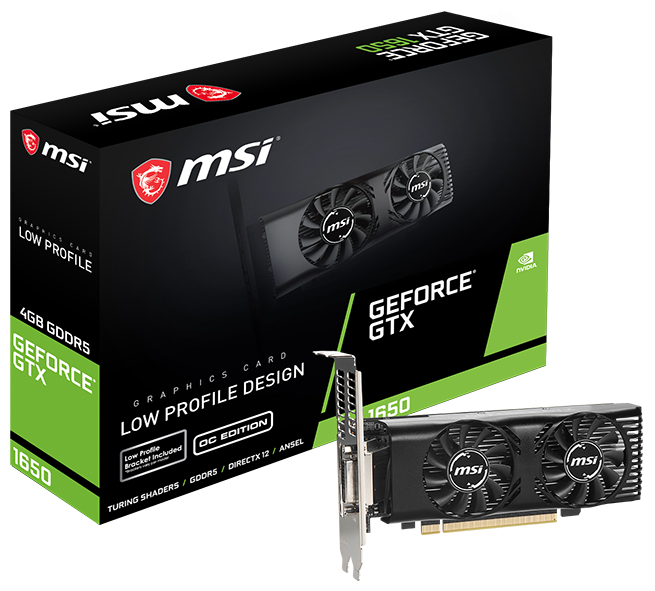 | 9.8 | |
2. ZOTAC Gaming GeForce GTX 1650 OC | 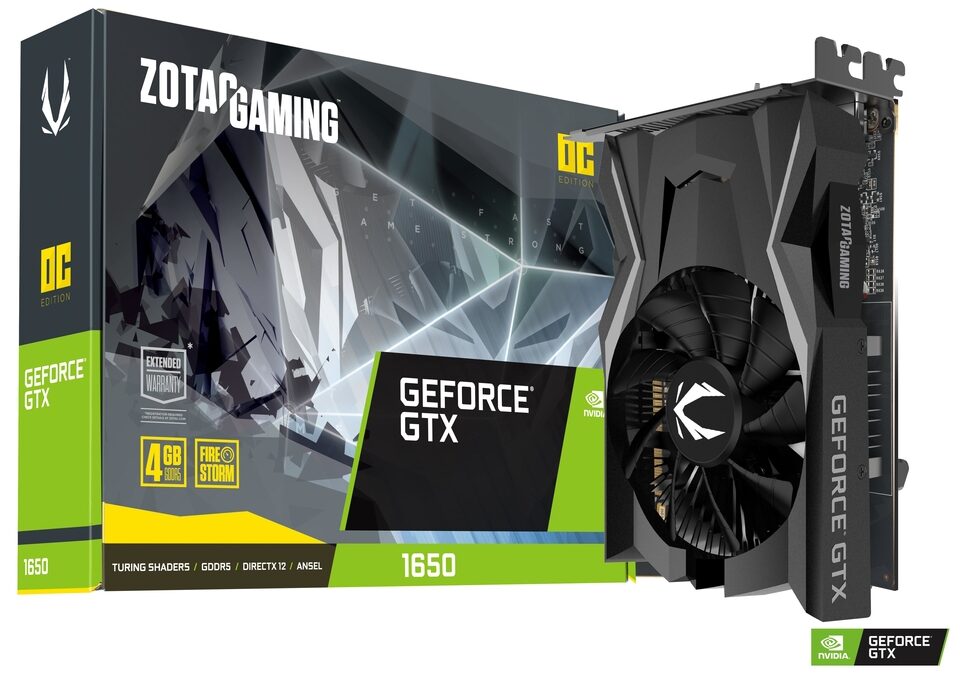 | 9.7 | |
3. MSI GeForce GTX 1050Ti GAMING X 4G | 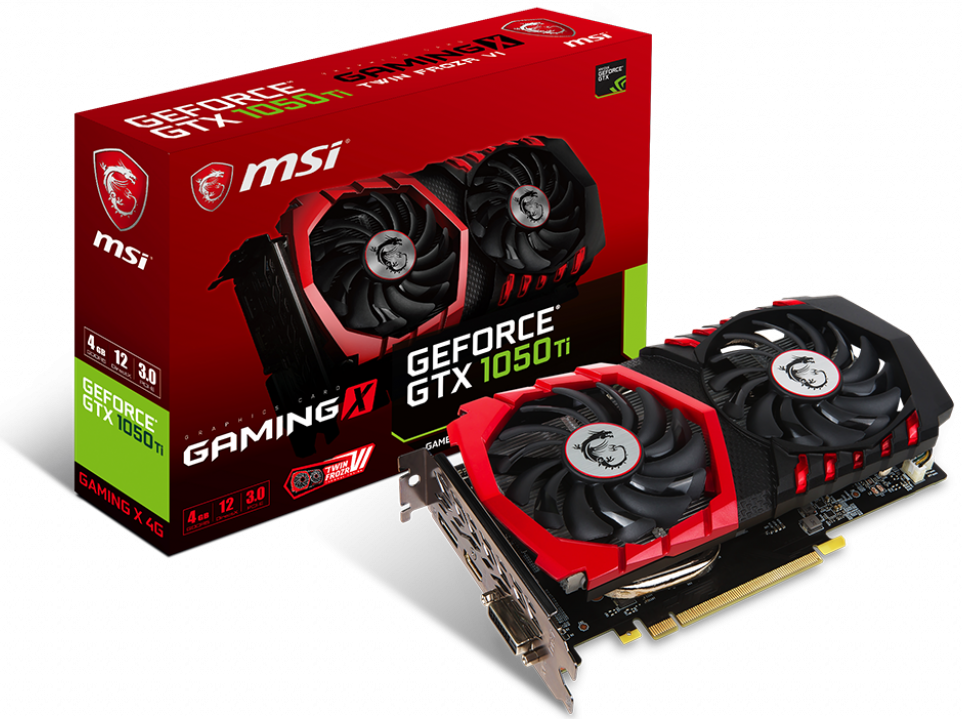 | 9.5 | |
4. Gigabyte Geforce GTX 1050 Ti OC (Low Profile) | 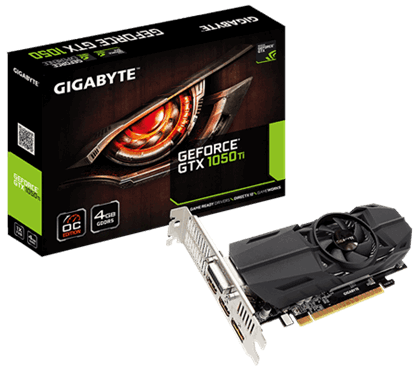 | 9.4 | |
5. Asus GeForce GTX 1050 Ti 4GB Phoenix Fan Edition | 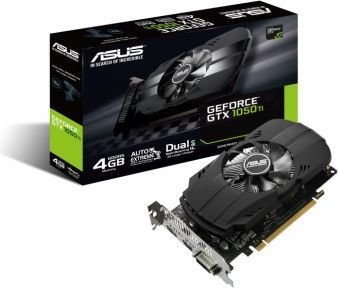 | 9.3 | |
6. MSI Gaming Radeon RX 560 Aero ITX 4G OC | 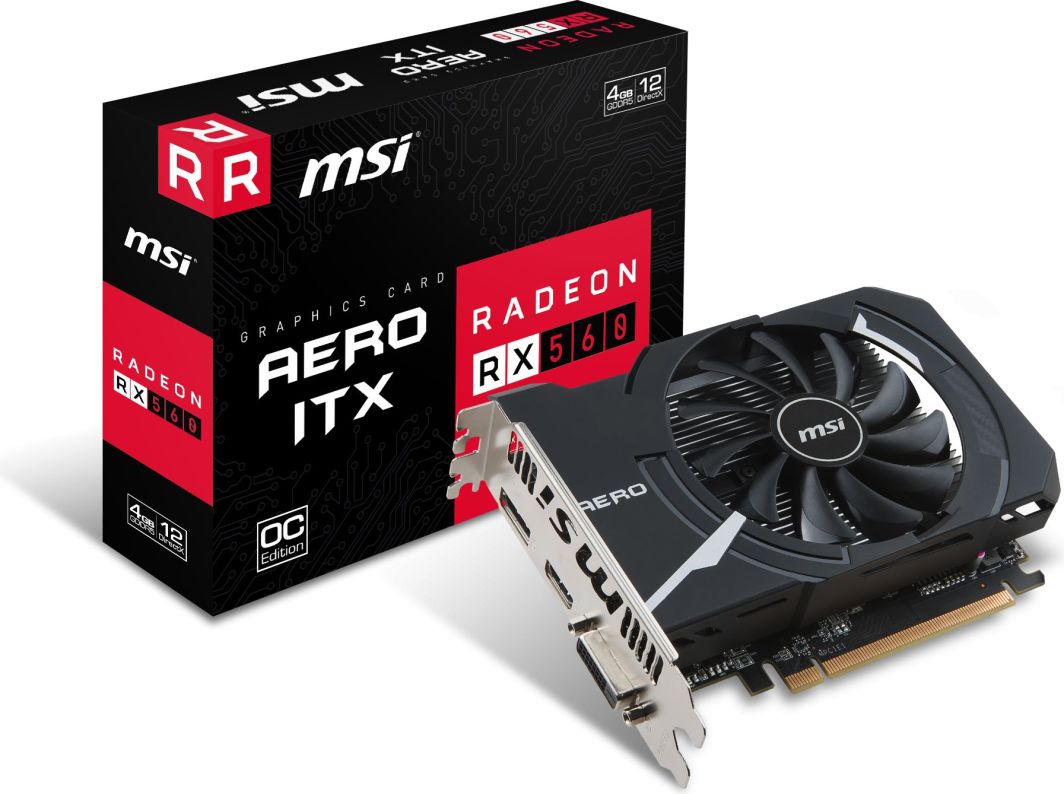 | 9.2 | |
7. Biostar Radeon RX 550 |  | 8.9 | |
8. ASUS ROG Strix Radeon RX 460 4GB OC | 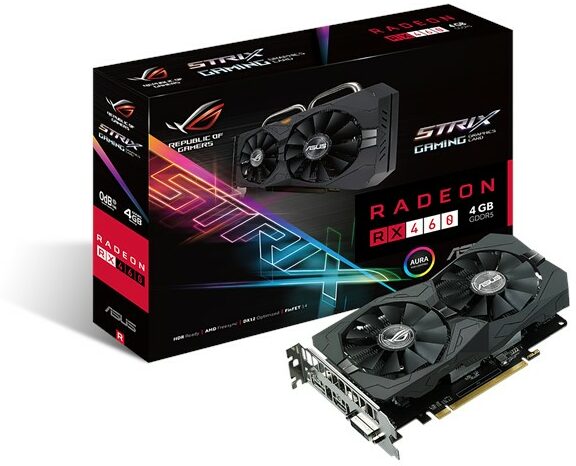 | 8.7 |
1. MSI GeForce GTX 1650 4GT LP OC
CUDA Cores: 896 | Base Clock: 1695 MHz | Boost Clock: 1695 MHz | Memory: 4GB GDDR5 | Memory Clock Speed: 8000 MHz | Power Consumption: 75W | Dimensions: 170 x 69 x 42 mm
 REASONS TO BUY
REASONS TO BUY
- The top-performing card in its class
- Great price
- Low profile form factor
- Supports dual monitor setups
- Overclocked out of the box
REASONS TO AVOID
- Older generation memory
Our Rating: 9.8/10
MSI produces another winner with the MSI GeForce GTX 1650 4GT OC LP.
Without having to add an additional power supply, it’s hard to beat the performance vs. size of the MSI GeForce GTX 1650 4GT. At a mere 168mm x 69mm x 37mm (with the low-profile bracket used), this little wonder really packs a punch.
The MSI GeForce GTX 1650 4GT runs a boost clock of 1695 MHz, making it the fastest GPU on this list. In fact, it is more than enough to achieve excellent 1080p graphics on demanding game titles and handle any basic application with ease.
However, with the small form factor, something has to give way. With the GTX 1650 4GT, you will be sacrificing some ability to handle multiple monitors, as it only supports a total of 2 monitors.
You will need an HDMI or Dual-Link DVI connector (or an adapter) to make this work with your monitor setup. Keep this in mind if you have a DisplayPort as the only connection on your monitor. This shouldn’t be a major concern as few monitors only have the DisplayPort connection.
You will have to purchase an HDMI to DisplayPort adapter; just make sure you are figuring this into your budget. Plus, the MSI GeForce GTX 1650 4GT also supports DirectX 12 and OpenGL 4.5.
As with most of the more advanced cards you will be reading about here today, the MSI GeForce GTX 1650 4GT comes with 4GB memory, which allows it to handle almost any application at high performance, as well as play the majority of popular games with high refresh rates on 1080p resolution.
You will be able to play movies and view photos at up to the 8k maximum resolution, so you will be future-proofed for advanced graphics. However, if you are playing top-end games or basic games at higher refresh rates, I would suggest that you stick with using this and all of the cards here on 1080p resolution so you can use the highest quality settings available.
The MSI GeForce GTX 1650 GT OC also works very well as a replacement card with a 75-watt power requirement. It is recommended that your system has a total of at least 300 total watts available to run effectively. Besides that, the MSI GeForce GTX 1650 GT supports G-sync technology when paired with a monitor with G-Sync capabilities.
Depending on what’s your use for the card, this may be a top selection for you. If I was in a space-restricted environment and I didn’t mind only having capabilities of a maximum of 2 monitors, the MSI GeForce GTX 1650 4GT LP OC would definitely be my first choice.
2. ZOTAC Gaming GeForce GTX 1650 OC
CUDA Cores: 896 | Base Clock: 1590 MHz | Boost Clock: 1590 MHz | Memory: 4GB GDDR6 | Memory Clock Speed: 12000 MHz | Power Consumption: 75W | Dimensions: 160 x 111 x 34 mm
 REASONS TO BUY
REASONS TO BUY
- Top performance in its class
- Super fast memory
- Comes overclocked
- Comes in various form factors
- Supports 3 monitor setups
REASONS TO AVOID
- None
Our Rating: 9.7/10
The ZOTAC Gaming Geforce GTX 1650 OC is a good place to start your search for a really nice graphics card that does not need the external power to drive a significantly upgraded graphics experience over the stock graphics card that may have come with your machine needing an upgrade.
This card will deliver solid quality 1080p graphics performance in almost any game title out there. In fact, if you are going to use this card for just about any 1080p application, you will be satisfied.
The ZOTAC name brand is relatively new to the graphics card market, only being founded in 2006, they are just starting to hit mainstream usage since the launch of the 10th series of the Nvidia Geforce graphics platform.
The ZOTAC Geforce GTX 1650 OC is one of those 10th series cards, noted by the first number in the name of the card. It does come in the low profile form factor, which, when paired with the low power consumption, will fit into very compact builds. This can be a dealbreaker for some of the cards on this list if you are dealing with a small form factor application.
With a 1.34” thickness, it’s just right for many applications. If the length of the card is of more concern, the full dimensions are 160mm x 111.15mm x 34mm or 6.30” x 4.38” x 1.34”.
If you’re looking to enhance your office workspace and attempting to get a better-performing multiple monitor setup, the ZOTAC Geforce GTX 1650 OC has you covered with its ability to handle 3 screens with ease.
The OC at the end of the name indicates that this particular graphics card comes from the factory with an overclock, so you won’t need to tweak your own overclock settings to get a little boost from the reference Nvidia Geforce 1650 cards. The reference indicates the original basic card produced mostly by Nvidia.
The ZOTAC GTX 1650 OC has a power consumption of 75 watts, but the total recommended system power is 300 watts, so check that out to make sure the rest of your PC has enough power to operate correctly.
If you are doing very graphic-intensive work, memory is always something to take into consideration. The ZOTAC GTX 1650 OC delivers 4 GB of 12 Gbps performance, which is, in fact, the highest on this list. It’s more than enough for most uses and is only limited to the most demanding memory-heavy activities.
The ZOTAC GTX 1650 OC does support DirectX 12 and also supports Dual Link DVI-D, Display Port 1.4, and HDMI connections. I have discussed the 1080p performance so far, however, the ZOTAC GTX 1650 OC will handle running 1440p without issues. You may experience slower than acceptable frame rates running the ZOTAC GTX 1650 OC at 1440p high settings in gaming.
The ZOTAC GTX 1650 OC comes in several form factors and is not only available in the low profile form factor I mentioned, click the button below and you will see all varieties available, all coming in with a reasonable price tag.
- YOU MAY ALSO LIKE: Best CPUs under $200
3. MSI GeForce GTX 1050Ti GAMING X 4G
CUDA Cores: 768 | Base Clock: 1379 MHz | Boost Clock: 1493 MHz | Memory: 4GB GDDR5 | Memory Clock Speed: 7108 MHz | Power Consumption: 75W | Dimensions: 229 x 131 x 39 mm
 REASONS TO BUY
REASONS TO BUY
- Affordable
- Great performance
- Highly reputable manufacturer
- Great for 1080p gaming
REASONS TO AVOID
- Older generation
- Only GDDR5 memory
Our Rating: 9.5/10
The MSI GeForce GTX 1050Ti GAMING X 4G is another good option if you are looking for a nice card that doesn’t require a power supply, and by coming in with a reasonable price tag (if there is no shortage), it will fit many budgets.
MSI (Microstar International) is one of the most recognized quality manufacturers in the computer hardware manufacturing business. If you have ever shopped for a motherboard or graphics card in the past 10+ years, you have surely run across the MSI brand. If you do happen to be shopping for a budget motherboard, be sure to check out my article, “Best Motherboards Under $100.”
The “ti” in the MSI GeForce GTX 1050Ti GAMING X 4G indicated a half-series upgrade to the Nvidia GTX 1050 series. While the 1050ti series does not perform to the level of the GTX 1650 series, it does a nice job with most applications. With MSI, you will enjoy a few different mode selectors that automatically change the clock speeds to adapt to the best performance for the purpose.
The MSI GeForce GTX 1050Ti GAMING X 4G performs at 1493 MHz / 1379 MHz (GPU clock speed) in Overclock mode, 1468 MHz / 1354 MHz in gaming mode, and 1392 MHz / 1290 MHz in silent mode.
As with the GPU, the MSI GeForce GTX 1050 TI GAMING X 4G also overclocks the memory frequencies as well performing at 7108 MHz in overclocked mode and 7008 MHz in both gaming and silent modes.
As far as dimensions go, this card measures 229mm x 131mm x 39mm. While not the smallest card on the list, it does fit in many smaller form factor applications. As with many of the cards you will read about in this article, the MSI GeForce GTX 1050Ti GAMING X 4G uses 75 Watts of power and is recommended to be used with a total system power supply of at least 300 watts.
The MSI GeForce GTX 1050Ti GAMING X 4G, as the name implies, boasts 4GB of onboard memory which will handle almost anything except the most demanding game titles. It also supports DirectX 12 and supports Dual Link DVI-D, Display Port 1.4, and HDMI connections.
Lastly, the MSI GeForce GTX 1050Ti GAMING X 4G does support up to 8k resolution but optimally works with 1080p for gaming applications or up to 4k for video viewing applications.
With the price being very near to the 1650 series cards on this list, I only recommend this card to those that want the additional peace of mind in using a well-established manufacturer.
- RELATED: Best PSUs Under $100
4. Gigabyte Geforce GTX 1050 Ti OC (Low Profile)
CUDA Cores: 768 | Base Clock: 1328 MHz | Boost Clock: 1442 MHz | Memory: 4GB GDDR5 | Memory Clock Speed: 7008 MHz | Power Consumption: 75W | Dimensions: 167 x 69 x 37 mm
 REASONS TO BUY
REASONS TO BUY
- Great performance
- Low profile form factor
- Competitive pricing
- Super quiet
REASONS TO AVOID
- Older generation card
- GDDR5 memory
Our Rating: 9.4/10
The Gigabyte Geforce GTX 1050 Ti OC is an entry by another of the most well-respected brands in computer parts manufacturing. If there is one category that this card stands out in, it’s the size.
Having a low profile is very helpful in many applications, but this card is also very narrow, measuring 167mm x 68.9mm x 37mm. This could definitely be a top pick for you if you have a really small area to deal with on your build/upgrade.
The Gigabyte Geforce GTX 1050 Ti OC sports clock speeds of 1442 MHz boost clock in OC mode and 1417 MHz in gaming mode and memory clocks register 7008 MHz. In addition, the Gigabyte Geforce GTX 1050 Ti OC has 4GB of memory, giving you enough memory to handle just about any application and almost every game out there, except for the most demanding titles.
The Gigabyte Geforce GTX 1050 Ti OC can connect up to four monitors, but you will need to use DisplayPort, HDMI, and DVI cables to do so. It also supports up to 8k resolution, but while gaming, I recommend sticking with 1080p. Scaling it up to higher resolutions could result in choppy performance on higher-quality settings.
If you are updating an older card or just adding a discrete graphics card to your current system, you will be amazed by the performance lift you will gain from adding this card to your system. The Gigabyte Geforce GTX 1050 Ti OC runs very quietly and has the capability to shut the cooling fan off when under simple workloads, which is another benefit when pairing it with a small case.
While this will not perform at the level of the newer generation GTX 1650, it will work very well for all basic applications and many gaming titles. When having to make the decision to upgrade an older card in a tight form factor, this should be high on your list of options.
The price point of the Gigabyte Geforce GTX 1050 Ti OC is not to be ignored as it’s much lower than the cards at the top of the list, which puts it in the middle of the pack.
When considering the Brand of Gigabyte, the clock speeds, the real-world performance, the size, and the price of this unit, it is definitely a contender as one of the better units here, especially for tight form factor applications.
- READ ALSO: Best CPUs Under $300
5. Asus GeForce GTX 1050 Ti 4GB Phoenix Fan Edition
CUDA Cores: 768 | Base Clock: 1290 MHz | Boost Clock: 1392 MHz | Memory: GDDR5 4GB | Memory Clock Speed: 7008 MHz | Power Consumption: 75W | Dimensions: 192 x 111 x 37 mm
 REASONS TO BUY
REASONS TO BUY
- Great cooling solution
- Quality construction
- Great 1080p performance
- Fair price
- Decent space for overclocking
REASONS TO AVOID
- Takes up two slots
Our Rating: 9.3/10
The Asus GeForce GTX 1050 Ti 4GB Phoenix Fan Edition is another Pascal series graphics card that does a really nice job with all computing/graphics workloads on 1080p, including both classic and modern games.
ASUS is one of the most well-respected manufacturers of computing parts out there today, so you can be assured of getting a very well-built product.
The “Phoenix Fan” sounds very cool but what is that? Will it help you in your decision?
It very well may make a difference to you in making this decision, because it is basically an upgraded fan-bearing system giving you almost twice the lifespan of regular fans. This means less chance for unexpected maintenance and a long time before having to replace it.
With these advancements, it still doesn’t replace the improvement that you will receive by jumping up to the next year’s model graphics processor. If you are looking at a great price vs. performance, this is not a bad place to start; coming in near the $200 price point, it is a great compromise.
The GPU Boost clock comes in at 1392 MHz with a base clock of 1290 MHz and memory speeds of 7008 MHz. The Asus GeForce GTX 1050 Ti 4GB Phoenix Fan Edition is G-sync capable if you pair it with a compatible monitor so you can eliminate screen tearing.
If you are trying to fit in a specific application, make sure you consider the dimensions before you buy. The Asus GeForce GTX 1050 Ti 4GB Phoenix Fan Edition comes in at 192mm x 111mm x 37mm.
You do want to make sure you have 2 full slots available to allow for proper GPU cooling. The Asus GeForce GTX 1050 Ti 4GB Phoenix Fan Edition only has one fan, so this part is even more important for smooth graphics performance.
The Asus GeForce GTX 1050 Ti 4GB Phoenix Fan Edition does come packaged with the ASUS GPU Tweak II software so it will help you maximize the performance of your new card with a few simple clicks.
- RELATED: Best PC Cases for Water Cooling
6. MSI Gaming Radeon RX 560 Aero ITX 4G OC
Stream Processors: 1024 | Base Clock: 1196 MHz | Boost Clock: 1196 MHz | Memory: 4GB GDDR5 | Memory Clock Speed: 7000 MHz | Power Consumption: 60W | Dimensions: 155 x 113 x 39 mm
 REASONS TO BUY
REASONS TO BUY
- Very low power consumption
- Great memory speed
- Supports FreeSync technology
- Pairs well with Ryzen CPUs
REASONS TO AVOID
- Worse performance than Nvidia cards
Our Rating: 9.2/10
The MSI Gaming Radeon RX 560 is one series more advanced graphics processing unit over the Radeon RX 550 in the Radeon graphics line, however, this unit is manufactured by MSI (Microstar International). Note that MSI is one of the top brands in the PC-building world and is well-known for its top-of-the-line products.
The MSI Gaming Radeon RX 560 measures 155mm x 113mm x 39mm, so it will fit in many smaller applications but definitely needs 2 slots to fit. The power used to power this unit is 60 watts, but it is recommended that you have a minimum 400 Watt power supply to handle the higher peaks and heat produced by the MSI Gaming Radeon RX 560.
The MSI Gaming Radeon RX 560 does allow for Crossfire bridging technology to allow you to use multiple GPUs. The MSI Gaming Radeon RX 560 may not deliver the same raw power as some of the Nvidia platform cards on this list, but in this case, Freesync might make the difference for many people.
Freesync will allow you to purchase a compatible Freesync monitor and take advantage of the technology to prevent screen tearing. The MSI Gaming Radeon RX 560 supports up to 3 monitors total, with connections including HDMI, DisplayPort, and DVI.
The MSI Gaming Radeon RX 560 delivers core GPU clock speeds up to 1196 MHz and memory clock speeds of 7000 MHz. Generally speaking, AMD-based graphics cards are much cheaper than their Nvidia-based counterparts; however, with a large number of graphics card models on the market today, it is just not as simple as that.
You are able to easily purchase 3 generations of new Nvidia-based cards, so oftentimes, it is more price-effective to purchase an older series Nvidia-based card to get more performance per dollar.
When considering AMD, there are some advantages of how well it pairs with Ryzen processors, however as a stand-alone unit in this price range, I would lean more towards the Nvidia-based products.
- YOU MAY ALSO LIKE: Best budget AIO coolers
7. Biostar Radeon RX 550
Stream Processors: 512 | Base Clock: 1100 MHz | Boost Clock: 1183 MHz | Memory: 2GB GDDR5 | Memory Clock Speed: 6000 MHz | Power Consumption: 60W | Dimensions: 159 x 102 x 38 mm
 REASONS TO BUY
REASONS TO BUY
- Very low power consumption
- Solid budget pick
- Supports FreeSync technology
- Pairs well with Ryzen CPUs
REASONS TO AVOID
- Noticeably slower than Nvidia counterparts
Our Rating: 8.9/10
The Biostar Radeon RX 550 is built on the AMD Radeon platform but as with all the other cards on the list, will operate without needing the additional power supply as many of the more expensive cards will, and runs entirely off the mainboard (motherboard) power delivered through the PCIe slot.
The Biostar Radeon RX 550 sports 2GB of onboard memory, which is half of what the Nvidia-based cards on this list. One great advantage of the Radeon-based cards is the ability to work with the AMD Freesync technology. What is Freesync?
AMD Freesync is a technology built into monitors that works in conjunction with graphics cards to reduce screen tearing and deliver a smoother performance to the eye. Does this mean that Nvidia products don’t offer a similar technology? No, it doesn’t. Nvidia-based products offer “G-Sync” technology to accomplish the same goal.
The AMD Freesync technology offered by the Biostar Radeon RX 550 has the advantage of price. AMD Freesync technology has the advantage of being offered in many more monitors at a much more affordable price.
The G-Sync technology comes at a premium of almost $100 more per monitor, whereas the AMD Freesync technology is, as the name implies, a free upgrade. Having the Freesync capability, even with the budget savings, does not move the Biostar Radeon RX 550 to my top pick on this list because it is outclassed significantly.
For instance, the GTX 1650 cards on this list will deliver almost 200% of the performance over the Biostar Radeon RX 550, according to user-submitted benchmarks. The Biostar Radeon RX 550 GPU clocks are between 1100 and 1183 MHz with the memory clocks coming in at 6000 MHz.
Radeon drivers have many reports of difficulties with drivers being compatible with new game titles. The maximum resolution is 4k and does support DirectX 12. Why would you consider the Biostar Radeon RX 550? Price. The Biostar Radeon RX 550 is a really cheap graphics card.
The Biostar Radeon RX 550 indicates that a 400 Watt power supply is needed for the system. If you are a brand loyalist to AMD, I would recommend that you look at some of the other options I have listed here unless you are at the top of your budget at $100.
8. ASUS ROG Strix Radeon RX 460 4GB OC
Stream Processors: 896 | Base Clock: 1090 MHz | Boost Clock: 1256 MHz | Memory: GDDR5 4GB | Memory Clock Speed: 7000 MHz | Power Consumption: 60W | Dimensions: 194 x 120 x 35 mm
 REASONS TO BUY
REASONS TO BUY
- Great for 1080p applications
- Excellent budget pick
- Supports FreeSync technology
- Pairs well with Ryzen CPUs
- Comes overclocked
REASONS TO AVOID
- Slower than Nvidia counterparts
Our Rating: 8.7/10
The ASUS ROG Strix Radeon RX 460 4GB OC is a generation older version of the RX 560, but with the ASUS ROG OC (overclocked) build, it is a really nice card.
ASUS is considered one of the top PC parts manufacturers out there today. The ROG (Republic of Gamers) Strix branding signifies that you are getting one of the most tuned-up models of any product, so you’re definitely getting an above-the-norm product.
The product dimensions for the ASUS ROG Strix Radeon RX 460 4GB OC are 194mm x 120mm x 35mm, so make sure this card will fit in your application, especially considering the fan’s heatsink extends out to 2 full slots in your machine.
The maximum resolution supported in the ASUS ROG Strix Radeon RX 460 4GB OC is “5k”, if you are not familiar with this resolution, it measures out at 5120 x 2880. The ASUS ROG Strix Radeon RX 460 4GB OC supports Dual-Link DVI, HDMI, and DisplayPort Connectors and supports DirectX 12.
While still running on the GDDR5 memory modules versus many of the GDDR6 units here, you will run a bit slower, but it isn’t a deal-breaker. The ASUS ROG Strix Radeon RX 460 4GB OC also comes paired with software GPU Tweak II, you are able to quickly overclock the unit to achieve the maximum performance for your dollar.
The ASUS ROG Strix Radeon RX 460 4GB OC runs at 1256 MHz in overclocked mode and 1236 MHz in gaming mode, with 7000 MHz on the memory speeds. This graphics card will do a great job with 1080p gaming and will easily handle most other graphics operations, so if you can get your hands on one of these, it’s not a bad deal, but there are better options out there for you.
I would recommend you look into other options because of the huge amount of graphics cards that are available for your money. With the advent of the next generations of cards from both Nvidia and AMD coming soon, the pricing will continue to get more competitive in the price vs performance space.
Final Verdict
In my opinion, paired with a lot of statistics, there are a few things that are clear.
Today, Nvidia-based cards are edging out the AMD-based cards in total speed and actually much lower power consumption.
The second thing that is really clear is that newer models are just a lift in a number, but the technology improvements are not just superficial, there are significant upgrades in performance.
With the newer generation Nvidia-based cards, it’s really a clear choice, unless you are going for the bottom cost on the list, and I would suggest that you really consider the near $150 price point to get a very nice upgrade for the sub $100 units here.
The MSI GeForce GTX 1650 OC takes my overall pick for 3 reasons: 1) Branding and history of MSI quality. 2) it’s the latest model Nvidia-based card on the list 3) the low profile and overall size of the card allow for use in many applications.

Very good article!
I was basically looking for something to slap on the back of my monitor so i would save desk space, not after extreme power either just casual 3D apps and was surprised there are so many options for graphics cards that dont need a PSU
Thank you for the feedback, glad I could be of help!
Re: ZOTAC Gaming GeForce GTX 1650 OC
there seems to be more than one version of this. Could you tell me what the exact model number you are recommending to us please? Have you tried out the version with the lowest power demand?
Hi there,
Currently, there are 4 versions of the card available, one with GDDR5 memory and the newer one, with GDDR6 memory. Each model has its low profile version.
You’re obviously going to get much better performance from the newer video card with GDDR6 memory, so I’d definitely recommend the newer model solely based on performance. And then, choose between the LP and normal-sized version based on how much space you have in your rig.
Lastly, make sure to check various online retailers to get the best deal, as all GPU prices are incredibly high because of the shortages. But, you can still get a good deal on some models.
Let me know if you have any other questions.
Richard
Hi Richard. I’m from Brazil. I’m trying to “resurrect” my Dell XPS 8500. I’m going to buy the motherboard, and if everything else is working, I plan to buy a video card as well (it came with NVIDIA GeForce GT 640 – 1 GB GDDR5, which “burned” many years ago).
Before I lost the motherboard, my plan was to buy this video card: Geforce GTX 1050 TI 4Gb Mini DDR5 128 Bit, Zotac, ZT-P10510A-10L. The reason: they said it consumed little energy and I still have the “generic” power supply that came with the PC.
Today, considering my PC, what is the best alternative, under these conditions: 1) Not changing my power supply; 2) lowest price.
Thanks in advance for your help!
Hey Diego!
All of these graphics cards run on power supplied through the motherboard, so any of these (and other 75W cards) won’t require you to upgrade your PSU.
If you’re on a really tight budget then I would suggest one of the GT 730 cards, those you can find under $100. Or if you need a bit more power then look for one of the 1030 GPUs, these are typically under $150.
Let me know if you have any other questions!
Richard
Hi,i have a dell vostro 3888 vt i5/8gb ram/m2 512gb ssd and vga GT1030lp.The vga hold
its performance back.Can i add any of the nvidia gtx 1650 lp?My concern is that the psu is 260watt (bronze).
Hey Bill,
That leaves 185W for the rest of your rig which I wouldn’t be comfortable with. I recommend at least a 500W PSU for most desktop (gaming) builds, so it’s definitely a time to upgrade in my opinion.
Hope this helps,
Richard
Thank you for compiling this list. It’s disappointing that neither nVidia nor AMD had GPUs that didn’t require external in this past generation.
No one mentioned the Nvidia T1000, 8GB GPU. It’s TDP is less than any of the cards mentioned here at 50W. It has twice the memory of any cards here at 8 GB, GDDR6. You get a full x16 of PCIe goodness, albeit 3.0 speed. The downside of this GPU is it has a typical price tag of $400, but if money is no problem and you want the best of both small, low power and performance, this is better than any of the above. You still have to decide how much and what kind of performance do you want to afford?
Amazing article. I personally wanna congratulate you for doing this, it probably helped a lot of people.
The only thing I wanna mention is that, if you want to, you can update it and slap the newer AMD RX 6400 on top as that’s the #1 right now ( only by a slow margin above the GTX 1650 ). A specific example of such a card would be the MSI RADEON RX 6400 AERO ITX 4G, look it up.